Stinky, spectacular Rotorua
Articles on this site contain affiliate links, meaning I may be compensated if you buy a product or service after clicking them. The full privacy & disclosure policy is here.Rotorua stinks.
I mean, literally, it really stinks.
The small city is built on a geothermal hotspot that brings bubbling mud pools, steaming vents and spouting geysers to the surface seemingly everywhere you look. There’s a large blowhole spraying clouds of steam across the road as you head out of town towards Taupo, and even the city parks have hot springs bubbling away inside them. Now that’s all well and good, except for the fact that much of the gas that comes along with this geothermal activity is hydrogen sulphide – and if you’re like me and enjoyed playing with things you weren’t supposed to in chemistry class, you’ll know exactly what that smells like.
Rotten eggs.
Still, as long as the wind is blowing in the right direction, Rotorua has a lot more to offer than I remember from my visits there as a kid. We spent a couple of days exploring in and around the city, racing each other on the luge (loads of fun, especially when Lauren went flying into the wall…), and, mostly, hiking around thermal parks taking a million photos while holding our noses. It’s harder than you might think.
First stop: Waimangu Volcanic Valley
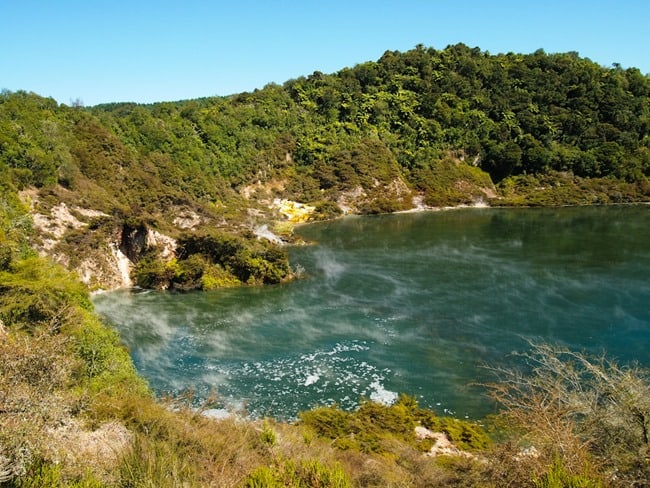
It was another hot, sunny day, and the woman at the ticket office warned us repeatedly about wearing sunscreen. “My idiot son didn’t wear any yesterday” she lamented, “and now he’s off work with sunstroke feeling very sorry for himself.” We all dutifully applied large amounts before going a single step further.
The park map lays out a fairly obvious route, with a couple of dozen stops of varying degrees of impressiveness. Much of the area was flattened by the 1886 Mount Tarawera eruption, drastically changing the landscape in the process.
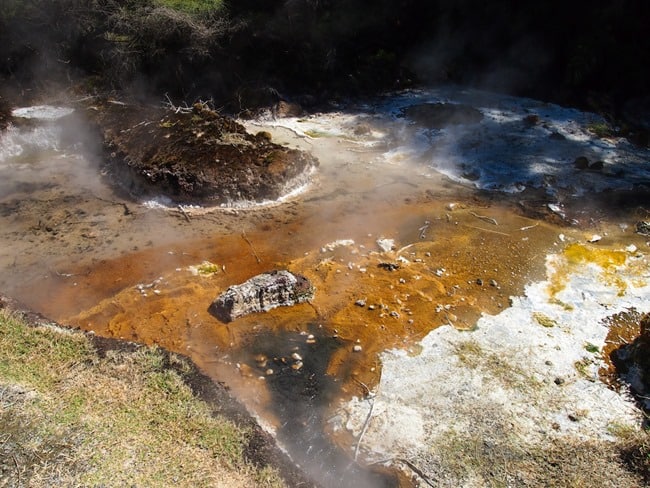
Steam hissed from narrow vents along the path and billowed up from the Frying Pan Lake – the largest hot spring in the world – below. Various chemicals stained the water and rocks dozens of different colours – dark reds and browns, bright greens and oranges and many shades more. Several of the streams and waterways reminded me of my time in southern Yellowstone last year, without the heaving crowds. There was, in fact, hardly another soul on the track as we wandered.
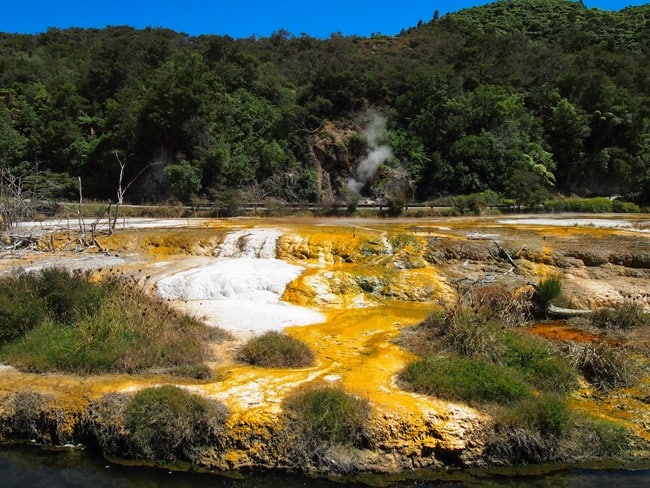
Despite the heat, the walk along the valley floor was an easy, mostly downhill stroll. Until we got to the turn-off for the Mt Hazard trail, that is. Warnings abounded of steep climbs, fitness requirements and rough surfaces. The loud family in front of us turned back after the first twenty metres, and that was all the encouragement we needed to keep going.
While the geothermal activity died off as we climbed, there were plenty of scenic views over the crater as we climbed slowly up one of the trail and sped rapidly down the other side. Re-joining the main trail, we hiked a little further before stopping – a recent trail closure meant that the final part of the track could only be done by bus.
At the other end lay Lake Rotomahana, a once-small body of water that became 20 times larger after the Tawawera eruption. The remains of the famous Pink and White Terraces – once dubbed the “8th wonder of the world” – that were destroyed in that eruption now lie 60 metres or more below the surface.
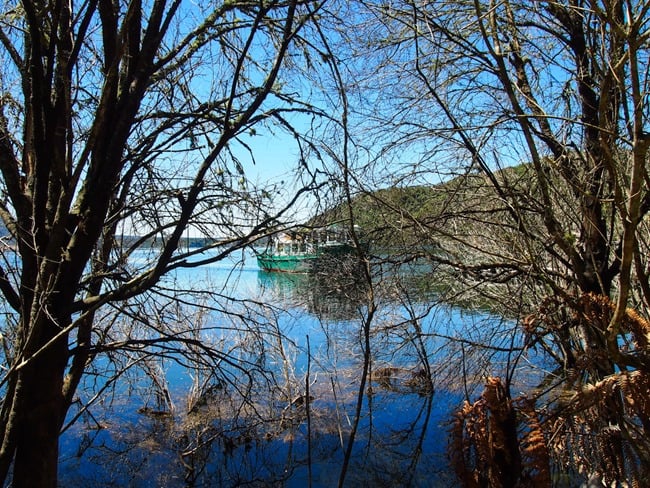
We took a 45 minute boat trip out around the lake, sharing the small vessel with only a few other people. The captain entertained and educated as we cruised along, spotting abundant birdlife in the calm waters as well as plenty of steam and boiling water along the shoreline.
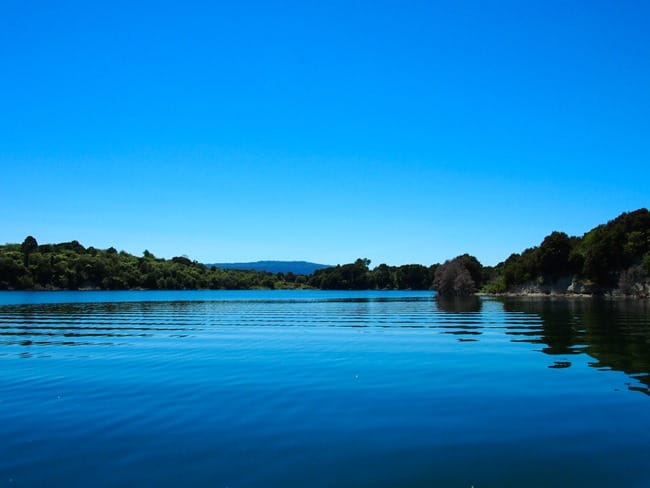
Our final geothermal experience of the day was also one of the most impressive, the noisy vents at Fumarole Bay. Nature is many things in this part of the world, but it certainly isn’t boring.
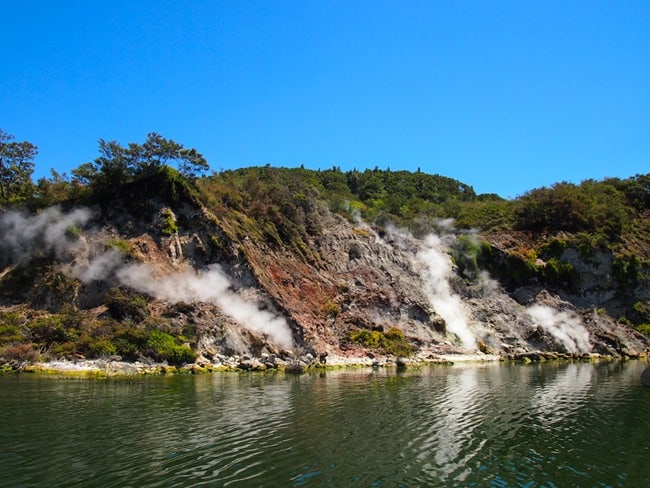
Of course, if one geothermal park is great, surely two of them have to be twice as impressive, right? There was only one way to find out, so the next morning we packed up and drove out to Wai-o-tapu Thermal Wonderland.
Now, there’s something about the word wonderland that brings on visions of small, screaming children and makes me want to run rapidly in the other direction, and first impressions lived down to those expectations. The Lady Knox geyser erupts “like clockwork” every morning, so every tour bus, campervan and hire car within a 100 mile radius seemed to be pulling into the carpark with us a few minutes beforehand. The geyser itself was a complete flop due to lack of rainfall (and the fact that the regular eruptions are due to staff members throwing a surfactant into it at 10:15am every day), but watching the gasping crowds was at least mildly amusing.
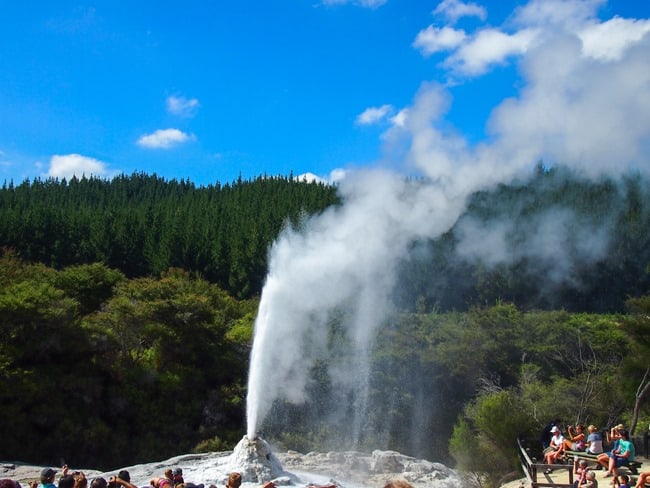
Fortunately the rest of Wai-o-tapu was much more impressive. Three interlinked walking routes stretch over a 3km area of steaming pools, bubbling mud and spraying geysers. Some of the colours really seemed like they shouldn’t exist in nature, and I wasn’t in any hurry to fall into any of the pools that looked like this.
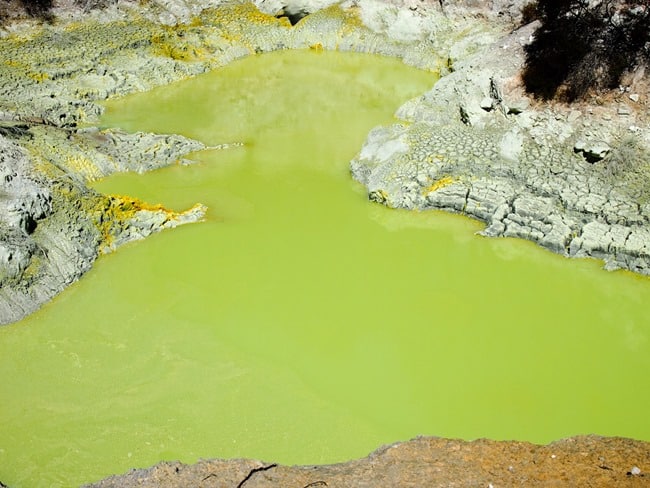
Or, to be fair, this.
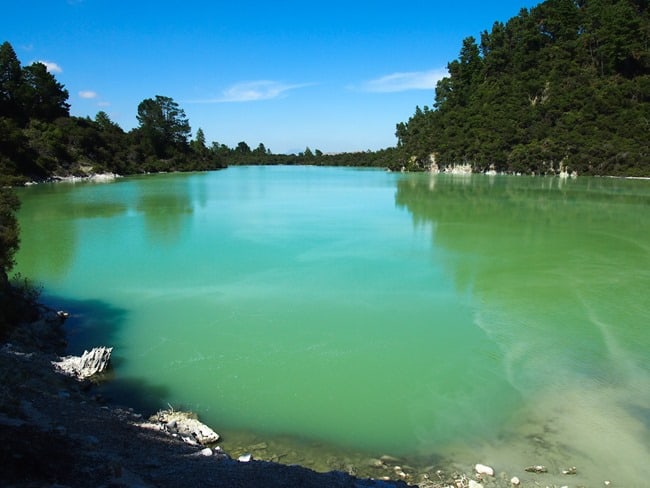
The Champagne Pool is marketed as one of the biggest attractions of the site, and it wasn’t hard to see why. Choking clouds rolled across the surface, a gentle breeze blowing them into our faces and obscuring all visibility for a few moments. It was an other-worldly experience, and the highlight of my time there.
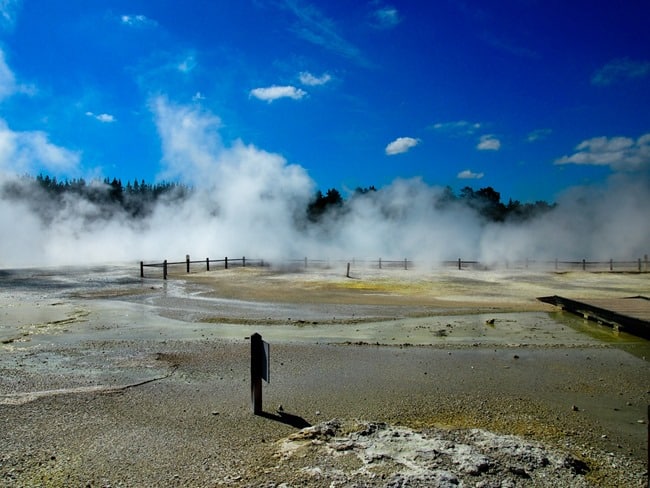
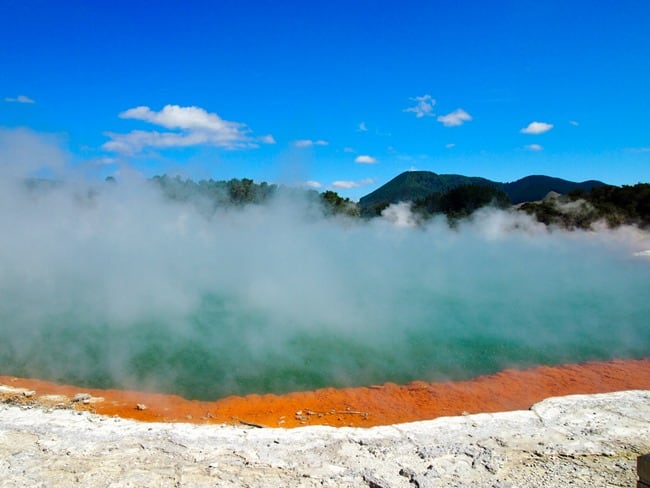
When the steam clouds did briefly part, there were even more beautiful views to be had.
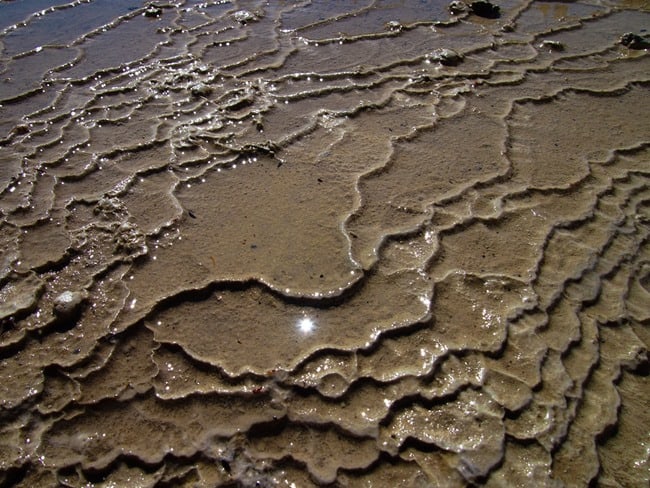
It was much harder to escape the crowds at Wai-o-tapu than at Waimangu the day before, although I suspect forgoing the Lady Knox “experience” and arriving in the afternoon would help significantly. The quietest spot we found was at the mud pool on the way out, the site of a large mud volcano worn down by erosion. Although there were still a few people around it was altogether quieter, the hum of voices giving way to the sounds of digestion emanating from the ever-changing landscape below.
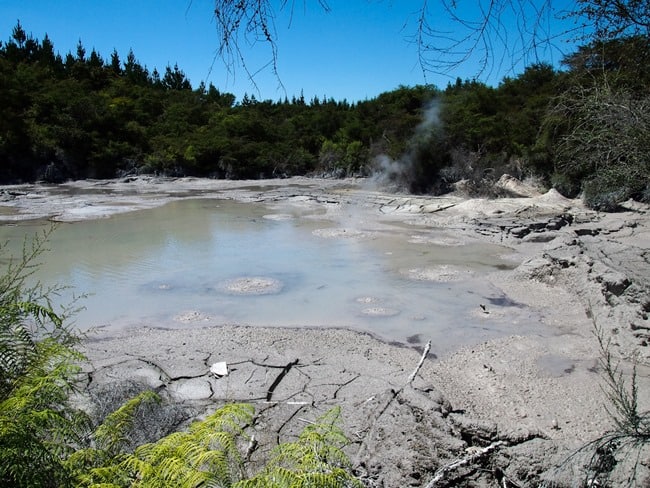
I really enjoyed both of the sites that we went to, although for me the solitude and boat ride at Waimangu gave it a slight edge. More importantly, though, I gained a newfound appreciation for Rotorua after our couple of nights there. I’d long written the city off as a smelly, over-hyped tourist destination, but ended up enjoying myself far more than I expected to.
Even if it did stink.
—-
Where we stayed: We stayed at the YHA Rotorua, a sprawling purpose-built hostel on the edge of the downtown area. I was impressed with the commercial-style kitchen and common area, including an awesomely impractical circular pool table. Our private room and the communal bathrooms were clean and well-maintained, and although the atmosphere in the hostel was rather sterile, it wasn’t a bad place to spend a couple of nights. Internet was the standard Global Gossip, free for YHA members.
Thanks as always to Tourism New Zealand for assisting with our activities!

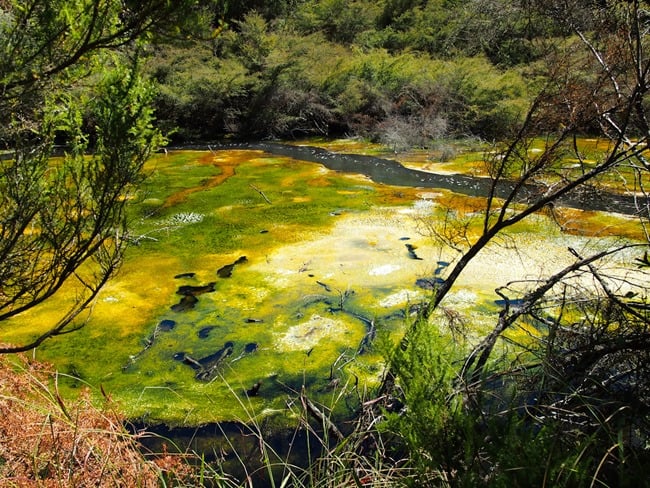
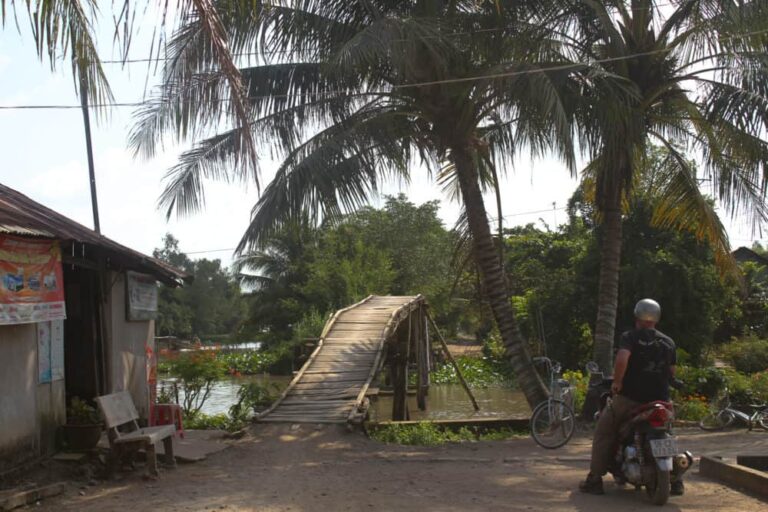
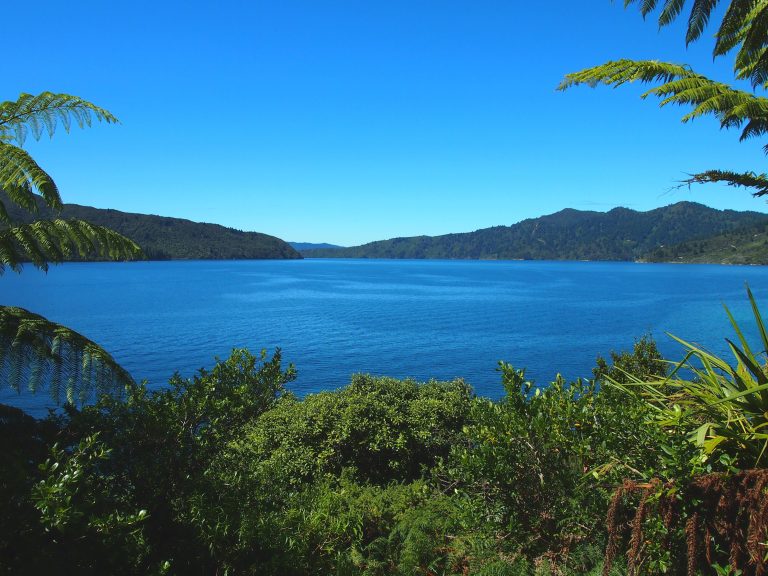
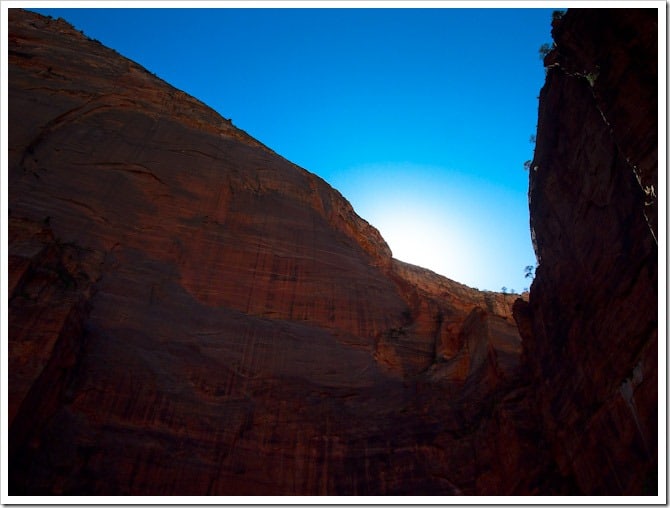
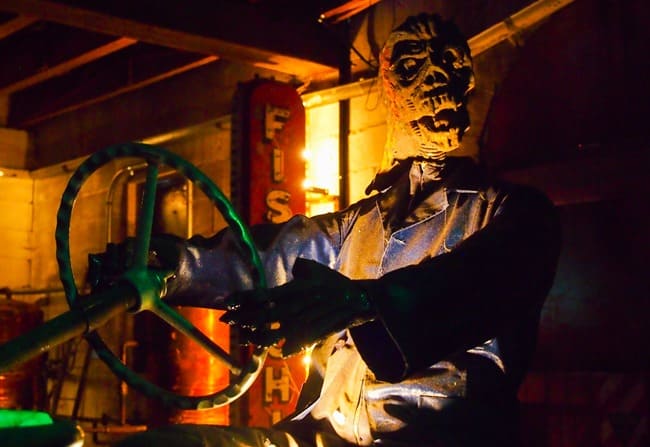
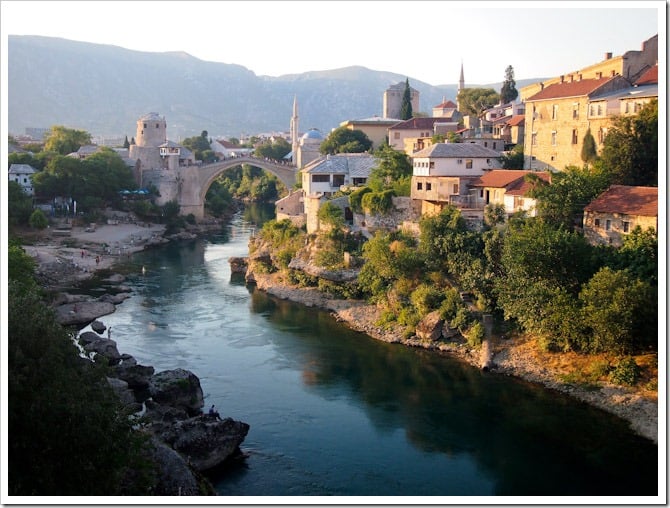
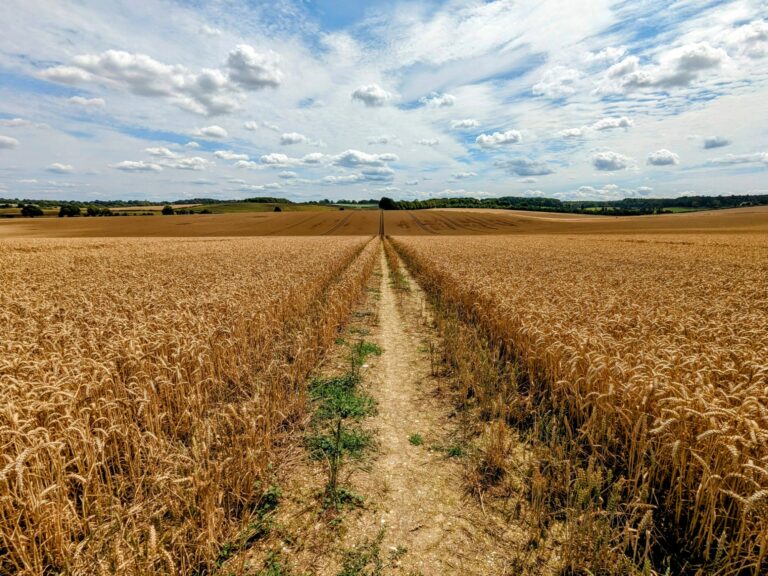
Wow, looks gorgeous. Glad I can’t smell it from here! Reminds me a little of Iceland and its geysers. Which, while gorgeous, also stank.
I can only imagine how stinky it is, but it sure is GORGEOUS!
Yep, it really does stink, but it is a fascinating place. Not the best spot for a picnic lunch though 😉
It may smell bad but the colors are totally worth it. I am again thankful that I have a terrible sense of smell.